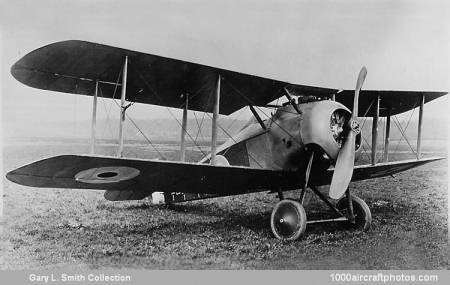Despite many similarities to the Snipe, the Salamander differed extensively and there was little or no interchangeability between the two aircraft. The forward portion of the fuselage was a simple armoured box, the bottom being 0.036 in (11 mm) plate, the sides 0.0197 in (6 mm) plate, the front (the engine backplate) 0.0262 in (8 mm) plate and the rear 0.0328 in (10 mm) plate with a second 0.0197 in plate separated by 3.75 in (9.50 cm).
Armament comprised two synchronized 0.303 in (7.7 mm) guns with provision for four 25 lb (11.34 kg) bombs. The first of three prototypes was flown on April 27, 1918, and the Salamander was ordered in large numbers (contracts were placed with the parent company, Air Navigation Co, Glendower Aircraft, National Aircraft, Palladium Autocars and Wolseley Motors), 37 being on RAF charge by 31 October, 1918.
When hostilities ceased on November 11, 1918, production of the Salamander continued with a view to its use by the postwar RAF, and by mid-1919, when manufacture eventually terminated, Sopwith had delivered 334 and other contractors had contributed a further 85. However, no squadron was ever equipped with this type which was abandoned in favour of the Snipe.
Span: 31 ft 2.625 in (9.52 m)
Length: 19 ft 6 in (5.94 m)
Height: 9 ft 4 in (2.84 m)
Wing area: 272 sq.ft (25,27 sq.m)
Weight empty: 1,844 lb (836 kg)
Loaded weight: 2,512lb (1,139 kg)
Max speed: 125 mph (201 kmh) at 3,000 ft (915 m)
Climb: to 5,000 ft (1,525 m) 6.5 min
Endurance: 1.5 hr
